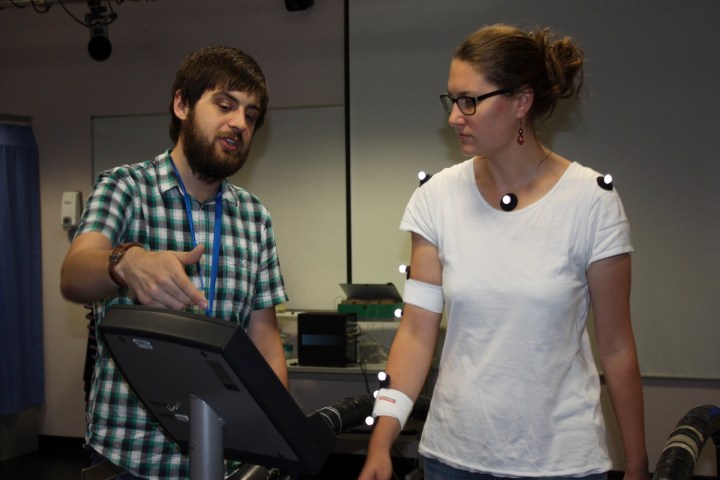
That is changing thanks to work being carried out by researchers at the University of Portsmouth in the U.K. In a new paper, entitled “Evidence of Big Five and Aggressive Personalities in Gait Biomechanics,” published in September’s Journal of Nonverbal Behavior, researchers came up with a method for predicting aggression, based on a person’s walk alone.
“We decided to tackle the lack of hard science in this area by doing a detailed biomechanical analysis of the way people walk, looking at the math of how they move and relating that to their personality type,” co-author Liam Satchell, a Ph.D. student in Forensic Psychology, told Digital Trends.
For the study, 29 individuals undertook a Big Five personality test — which measured their conscientiousness, openness, extraversion, agreeableness, and neuroticism — before being recorded on a treadmill using motion-capture technology.
“We filmed using motion-capture technology, placing motion-capture sensors on our participants and then using highly sensitive infrared cameras to record the movements as points in space,” Satchell said. “What you can then do is to accurately analyze those movements using a computer. For our study, we decided to focus on movement of the trunk, or upper body.”
Individuals reporting high level of physical aggression turned out to swing their upper bodies and pelvis more noticeably than the rest of the participants, suggesting a correlation between aggressive behavior and certain types of walking movement.
While 29 people do not provide an enormous data set by any stretch, Satchell said he believes the findings certainly warrant a more in-depth study and thinks they could even be used to help pinpoint aggressive individuals using smart algorithms in future closed-circuit television (CCTV) cameras.
“One of the things we’re interested in pursuing this down the CCTV line, so that you could extract biomechanics from security camera footage,” he said. “In that case, you could identify high-risk individuals within a crowd. It would then be possible to draw that to the attention of someone monitoring the CCTV.”


